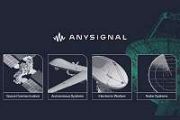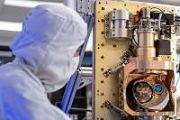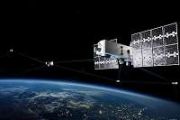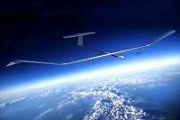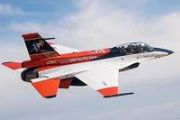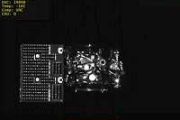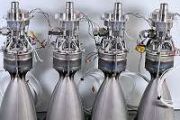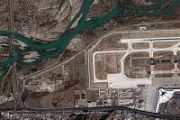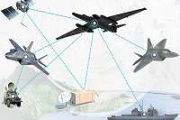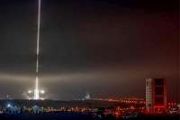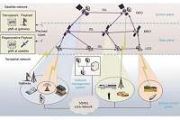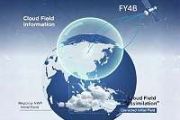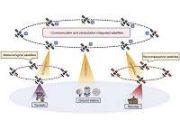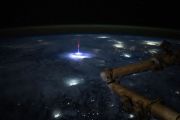
Copernical Team
VV27 road to liftoff
 Video:
00:07:00
Video:
00:07:00
Highlights and liftoff of Vega-C flight VV27 from Europe’s Spaceport in French Guiana, at 23:03 local time on 25 July (03:03 BST/04:03 CEST on 26 July).
Flight VV27 was operated by Arianespace and launched Airbus’s four CO3D satellites and the French space agency CNES MicroCarb mission.
The four small satellites in the CO3D constellation (an abbreviation of the French 'Constellation Optique en 3D') are set to map the globe in three dimensions from low Earth orbit, to serve public and private sector needs.
MicroCarb is designed to map sources and sinks of carbon dioxide on a global scale. ESA coordinated and procured the
Nobody owns the moon—researcher suggests that could be a problem
This request seems a bit unusual, so we need to confirm that you're human. Please press and hold the button until it turns completely green. Thank you for your cooperation!
Press and hold the button
If you believe this is an error, please contact our support team.
185.132.36.159 : 4513dfdc-4e71-40c4-9f2d-677fe0fa
Europe’s new carbon-monitoring mission launches on Vega-C

The MicroCarb mission, led by the French space agency CNES, will monitor carbon dioxide in the atmosphere to help identify the world’s main sources and sinks of this important greenhouse gas. Launched on 25 July on a Vega-C rocket from Europe’s Spaceport in French Guiana, the mission benefitted from the In-Orbit Demonstration and Validation (IOD/IOV) programme managed by the European Space Agency (ESA) on behalf of the European Commission.
Satellite ready to test link for global 5G-broadband

A small satellite designed to deliver direct 5G-broadband access from space to a compact ground device, supported by the European Space Agency (ESA), has made it into orbit after its launch. The planned demonstration link is an early step in exploring space-enabled fast connectivity for inaccessible regions – highlighting future possibilities such as connecting rural schools and providing remote healthcare access.
NASA: Senegal is 56th country to sign Artemis Accords
 Senegal has become the 56th country to sign the Artemis Accords for peaceful space exploration, NASA announced Friday.
Signing the Artemis Accords means to explore peaceably and transparently, to render aid to those in need, to ensure unrestricted access to scientific data that all of humanity can learn from, to ensure activities do not interfere with those of others, to preserve histor
Senegal has become the 56th country to sign the Artemis Accords for peaceful space exploration, NASA announced Friday.
Signing the Artemis Accords means to explore peaceably and transparently, to render aid to those in need, to ensure unrestricted access to scientific data that all of humanity can learn from, to ensure activities do not interfere with those of others, to preserve histor How to Master Terraria: Essential Tips from a Pro Player
 Playing Terraria on Master Mode can be brutal. A single hit from a slime could kill you if you're not wearing armor. The game gets much harder at higher difficulty levels, and you'll need solid preparation and strategy.
Playing Terraria on Master Mode can be brutal. A single hit from a slime could kill you if you're not wearing armor. The game gets much harder at higher difficulty levels, and you'll need solid preparation and strategy. SpaceX launches 28 Starlink satellites days after service outage
 SpaceX early Saturday launched another 28 Starlink satellites into low-Earth orbit from Florida, days after a short service outage hit the space-based internet provider.
The Falcon 9 lifted off at 5:01 a.m. EDT from Cape Canaveral Space Force Station's Pad 40.
The first-stage booster launched for the 22nd time, including Crew-6 and 17 previous Starlink missions.
About 8 mi
SpaceX early Saturday launched another 28 Starlink satellites into low-Earth orbit from Florida, days after a short service outage hit the space-based internet provider.
The Falcon 9 lifted off at 5:01 a.m. EDT from Cape Canaveral Space Force Station's Pad 40.
The first-stage booster launched for the 22nd time, including Crew-6 and 17 previous Starlink missions.
About 8 mi Vega C launch deploys Earth observation and climate monitoring satellites
 Vega C has completed its VV27 mission, successfully delivering the CO3D and MicroCarb satellites into their respective orbits. Liftoff occurred at 23:03 local time on July 25 (04:03 CEST on July 26), powered by the P120C solid rocket motor which fired for 2 minutes and 23 seconds. The launch sequence continued with ignitions of the Zefiro 40 and Zefiro 9 stages.
The AVUM+ upper stage execu
Vega C has completed its VV27 mission, successfully delivering the CO3D and MicroCarb satellites into their respective orbits. Liftoff occurred at 23:03 local time on July 25 (04:03 CEST on July 26), powered by the P120C solid rocket motor which fired for 2 minutes and 23 seconds. The launch sequence continued with ignitions of the Zefiro 40 and Zefiro 9 stages.
The AVUM+ upper stage execu Cascade raises 59M to develop full stack satellite communications platform
 Cascade Space has secured $5.9 million in seed funding to advance its development of a comprehensive satellite communication platform. The round saw investment from Nova Threshold, Undeterred Capital, Y Combinator, Night Capital, Olive Capital, Valkyrie Ventures, Karman Ventures, Palm Drive Capital, Garage Capital, TRAC, Aurelia Foundry, Hawktail, MGV.VC, Pioneer Fund, Liquid 2 Ventures, and oth
Cascade Space has secured $5.9 million in seed funding to advance its development of a comprehensive satellite communication platform. The round saw investment from Nova Threshold, Undeterred Capital, Y Combinator, Night Capital, Olive Capital, Valkyrie Ventures, Karman Ventures, Palm Drive Capital, Garage Capital, TRAC, Aurelia Foundry, Hawktail, MGV.VC, Pioneer Fund, Liquid 2 Ventures, and oth Robotic space rovers keep getting stuck
 When a multimillion-dollar extraterrestrial vehicle gets stuck in soft sand or gravel - as did the Mars rover Spirit in 2009 - Earth-based engineers take over like a virtual tow truck, issuing a series of commands that move its wheels or reverse its course in a delicate, time-consuming effort to free it and continue its exploratory mission.
While Spirit remained permanently stuck, in the
When a multimillion-dollar extraterrestrial vehicle gets stuck in soft sand or gravel - as did the Mars rover Spirit in 2009 - Earth-based engineers take over like a virtual tow truck, issuing a series of commands that move its wheels or reverse its course in a delicate, time-consuming effort to free it and continue its exploratory mission.
While Spirit remained permanently stuck, in the 




